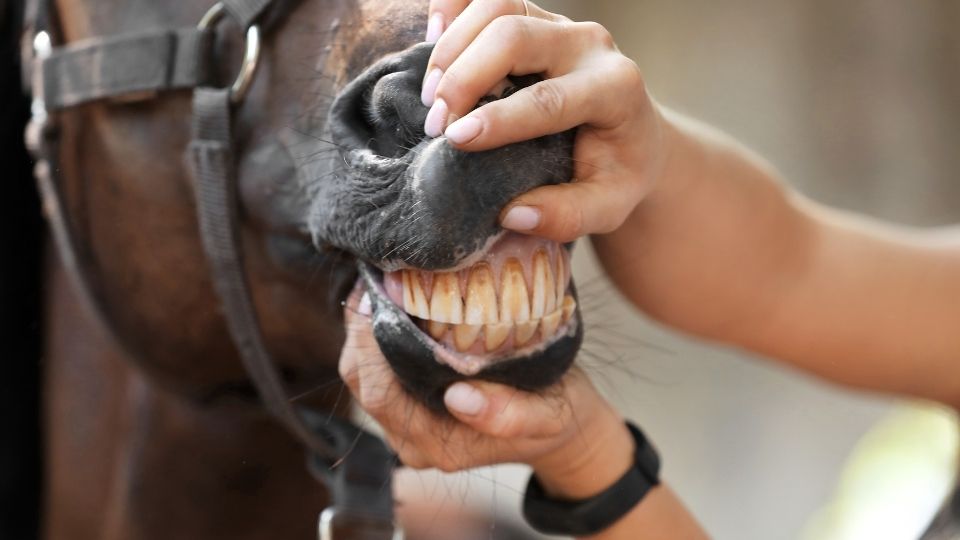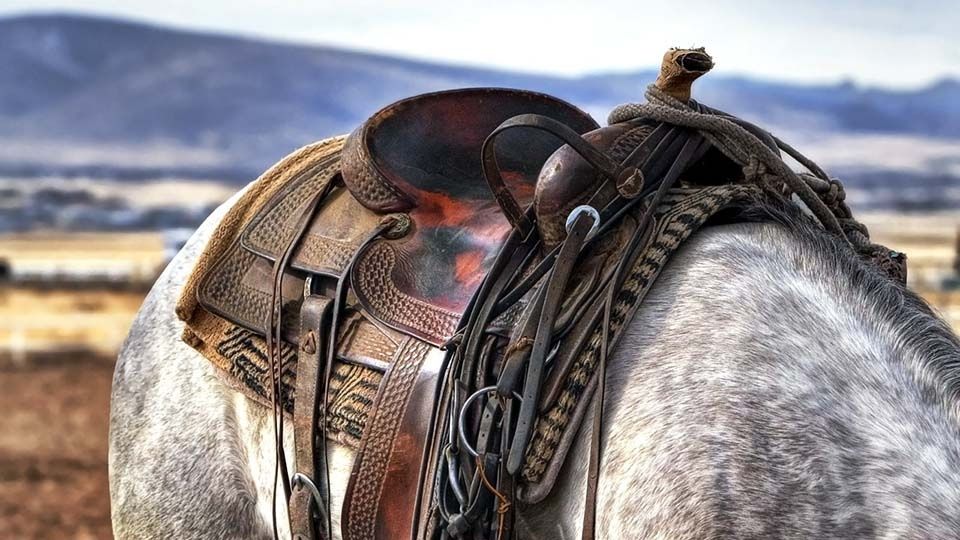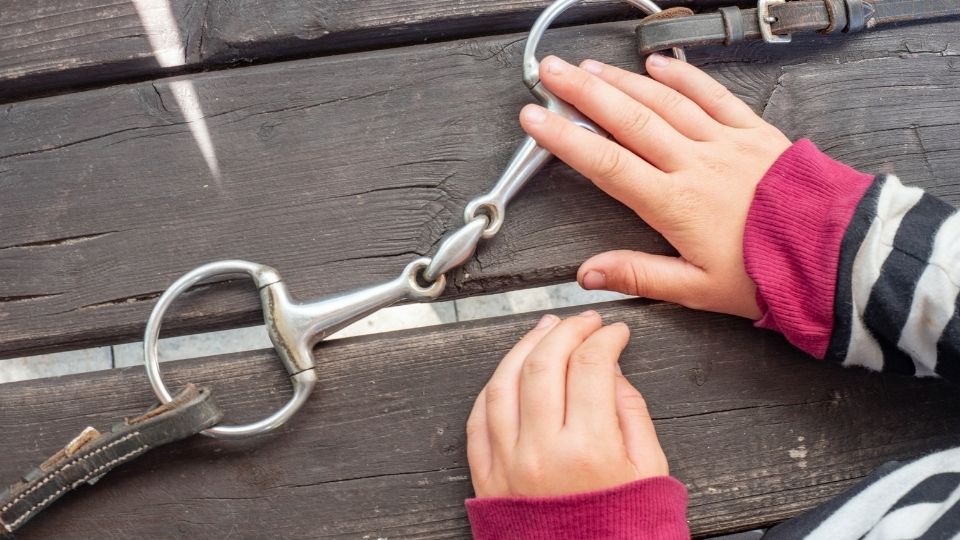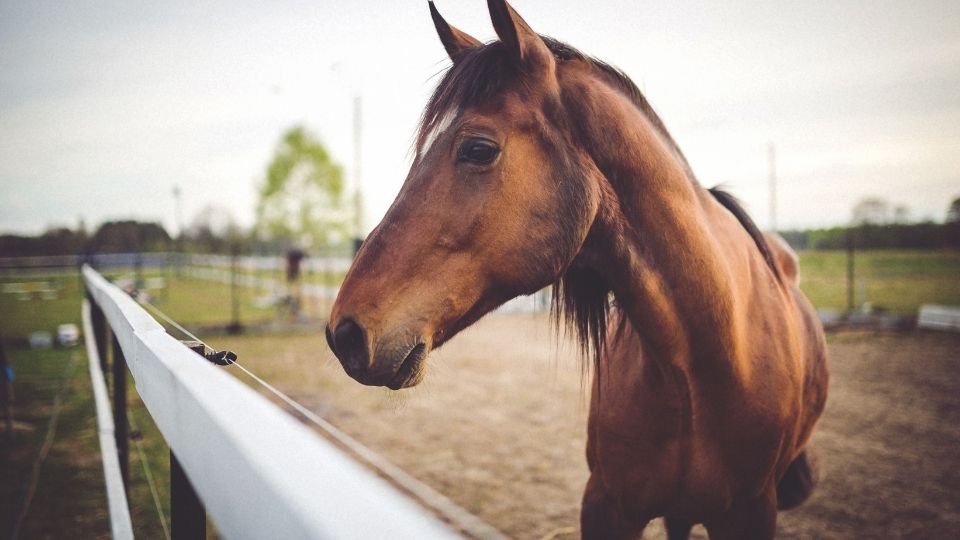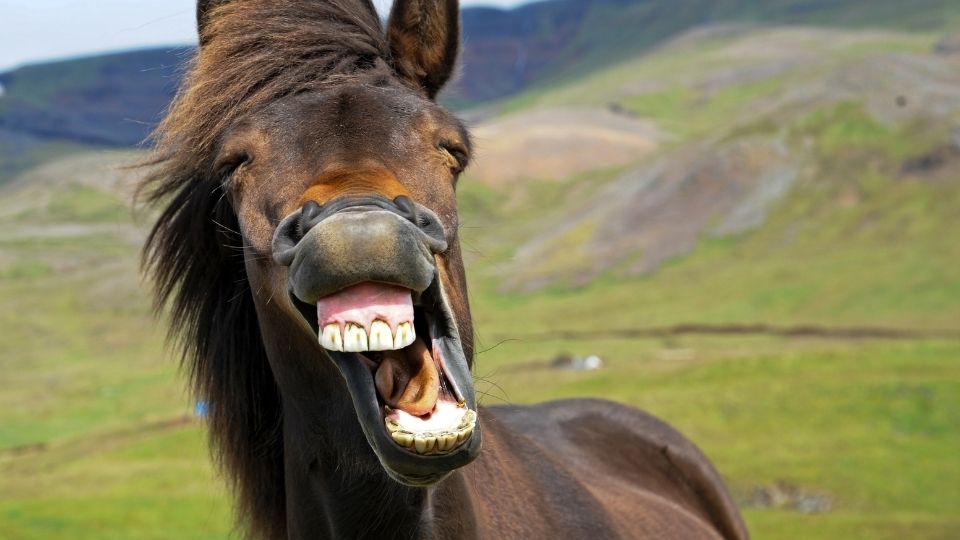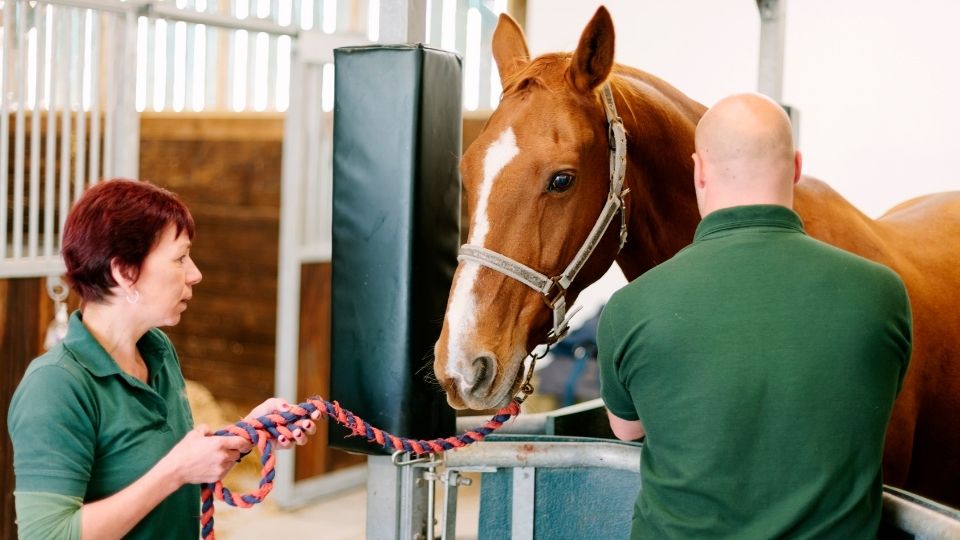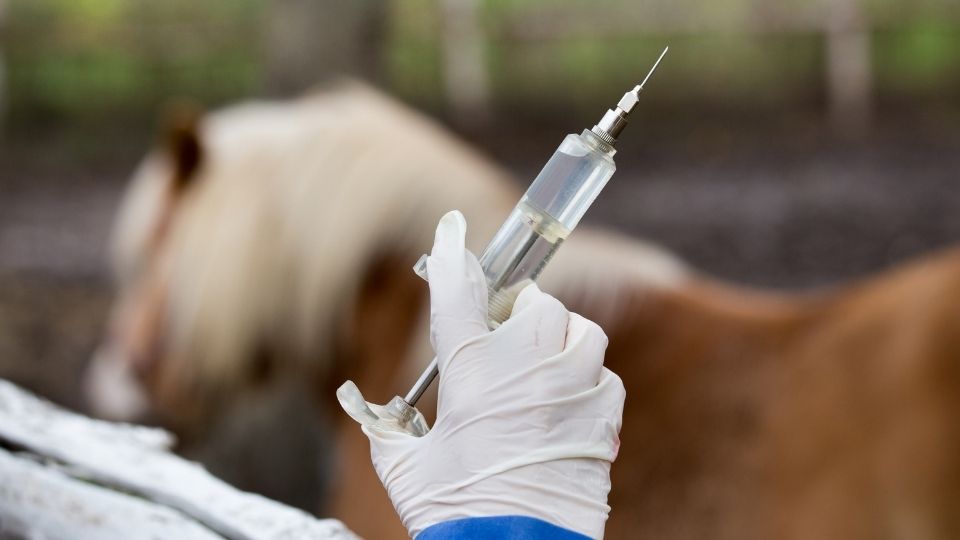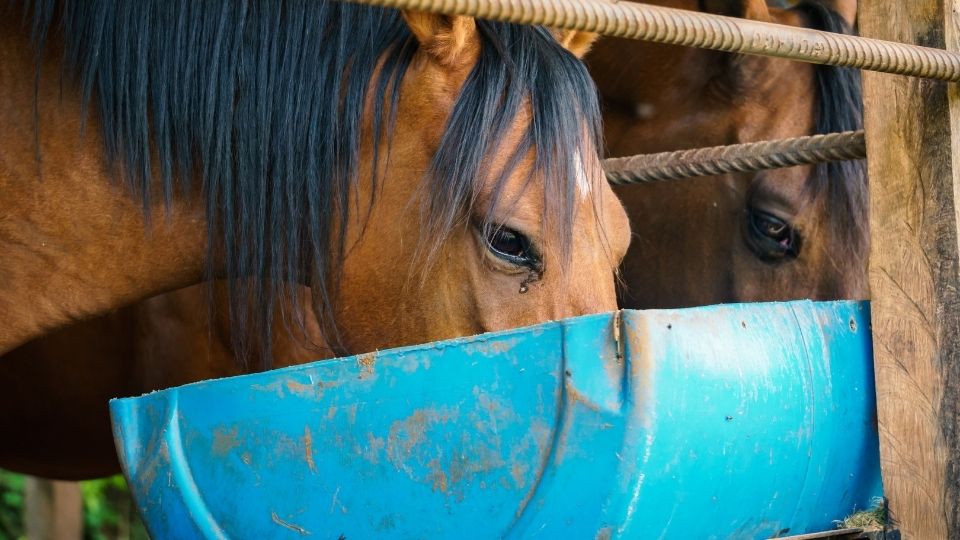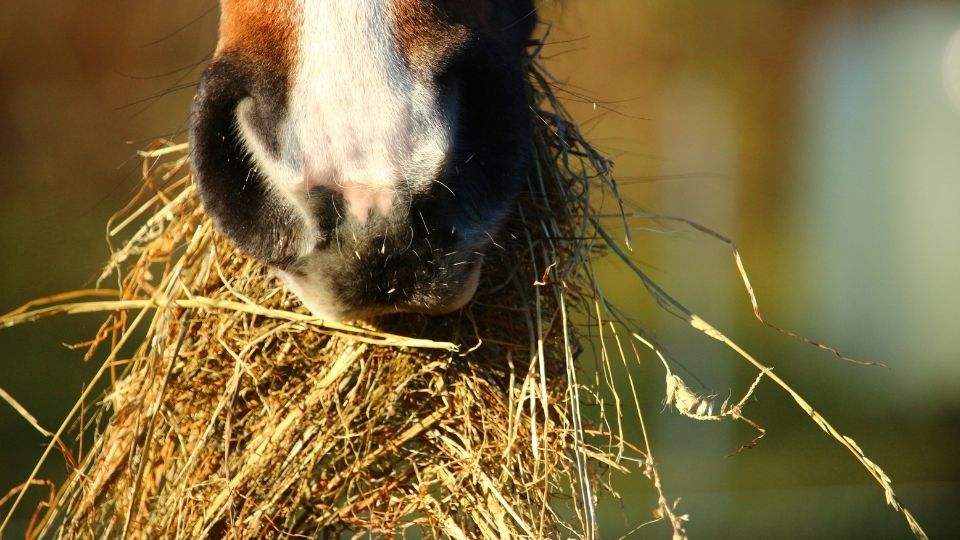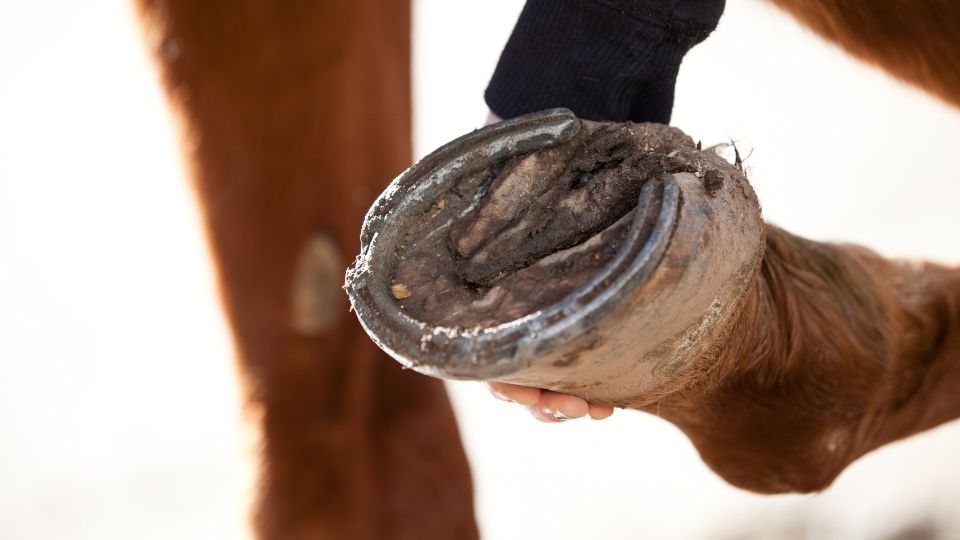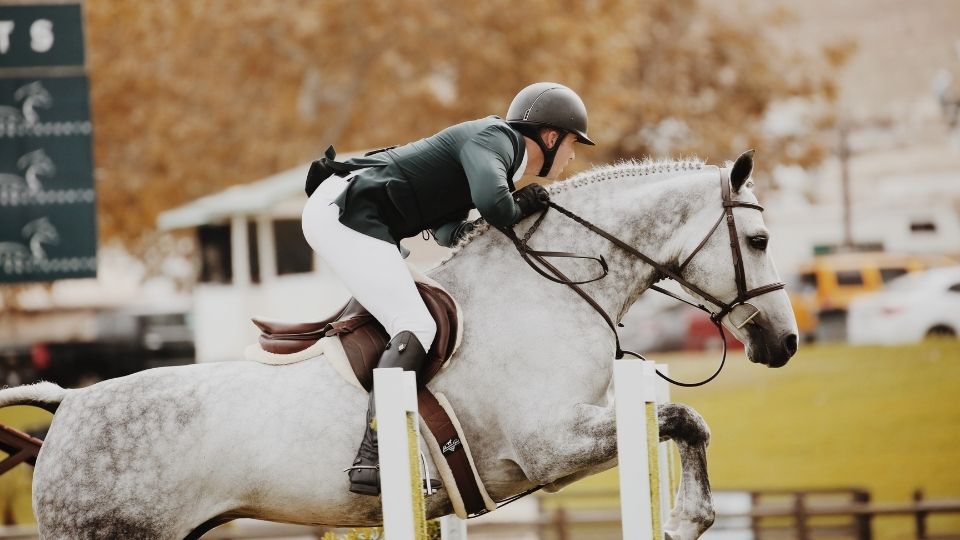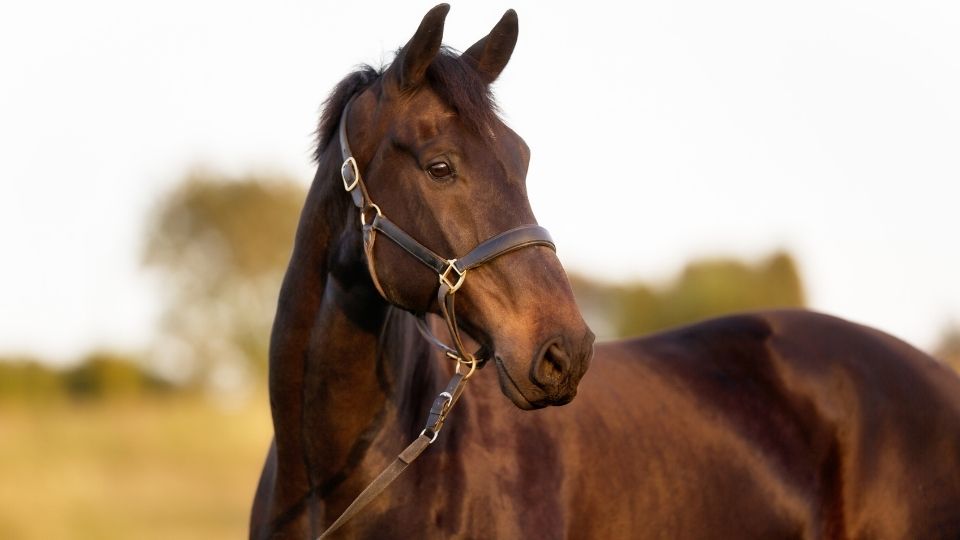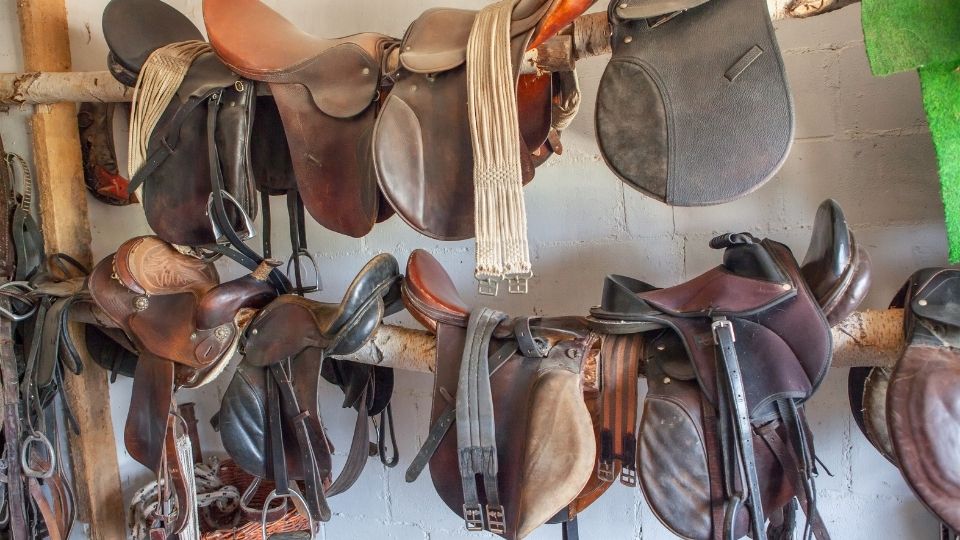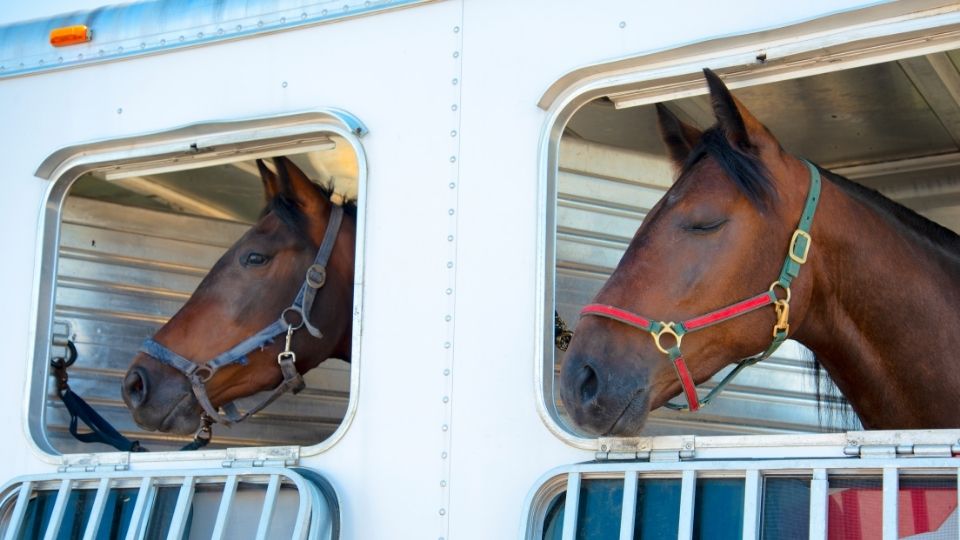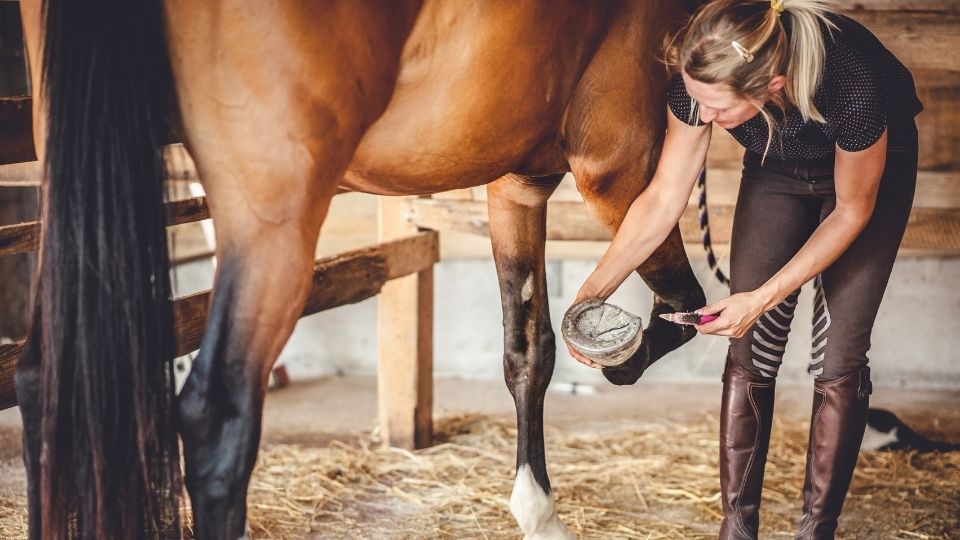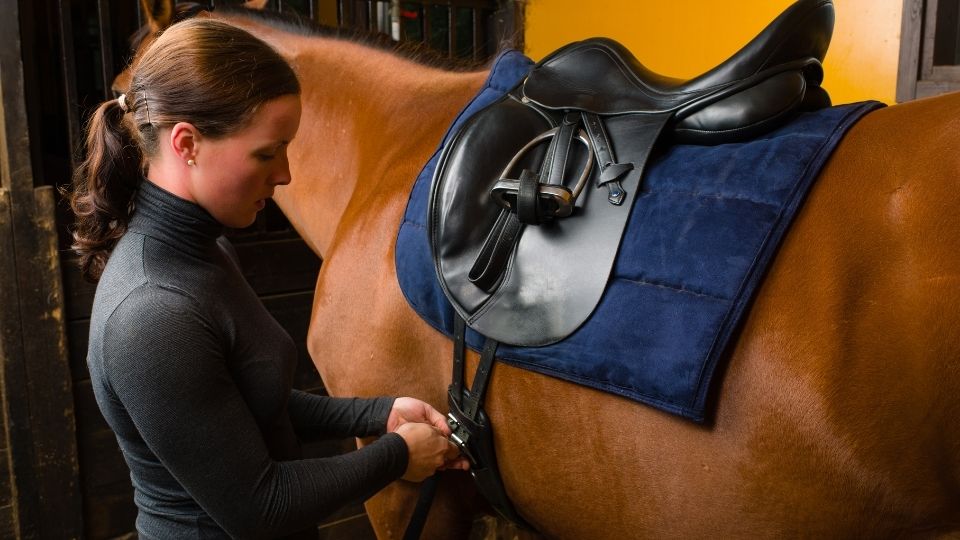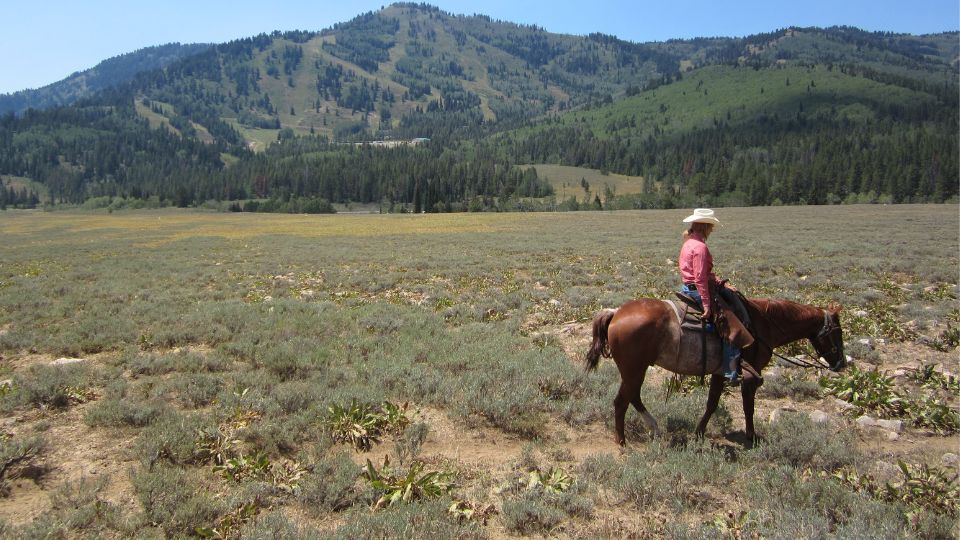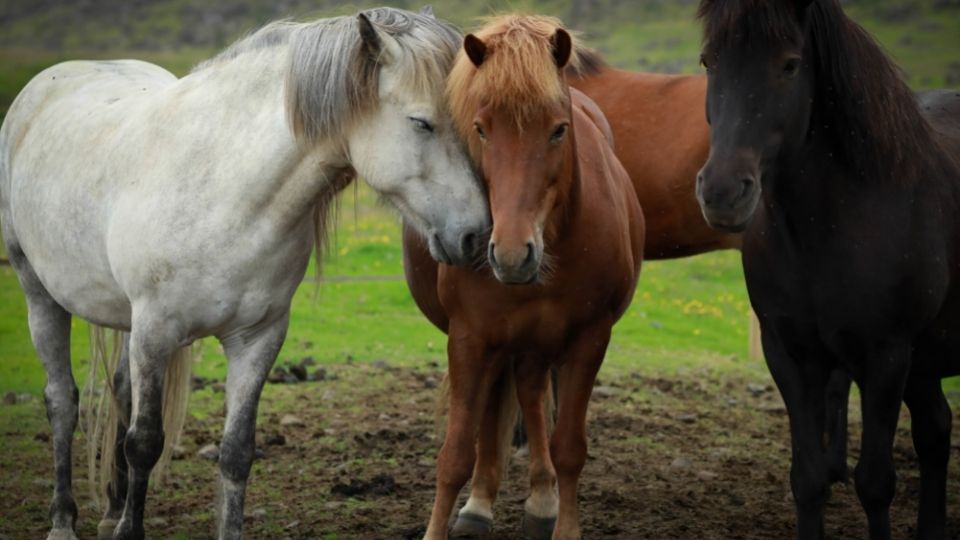Trail Ride First Aid for Horses
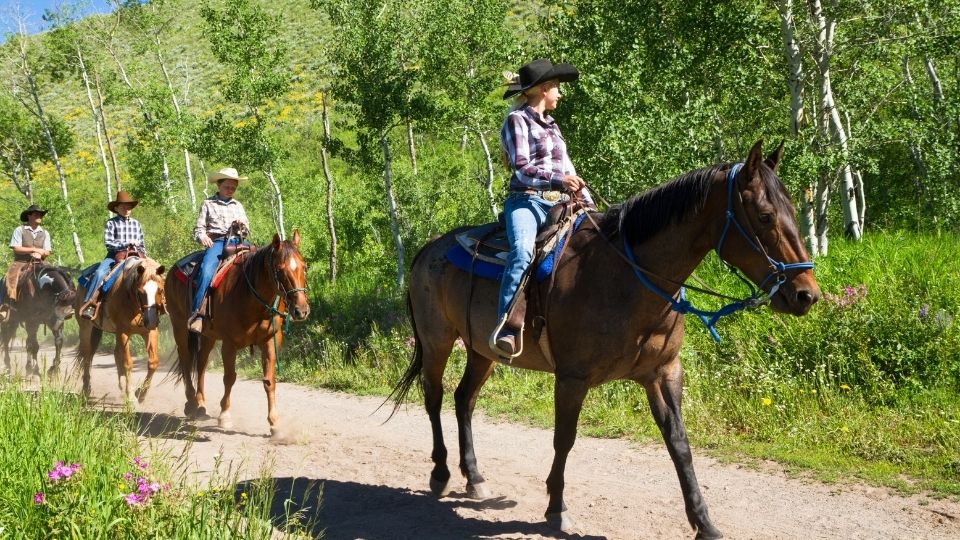
Introduction
Horses can be a wonderful way to experience the beautiful land in which we live. They can be willing partners as they carry us to explore the surrounding hills, valleys, rivers, mountains, and country side. Horses are strong and powerful animals but, they can often experience injury or sickness while working on these trips. Potential problems include hoof injuries, lacerations, colic, fractures, muscle cramps, eye injuries, and more. This paper will discuss some basic equine first aid that can help treat some of these injuries while on trail rides. A key point to always remember is horses may become agitated when experiencing pain. Remain calm and do not escalate the situation. Basic horsemanship skills cannot be forgotten and must be applied while treating any type of horse injury or sickness to avoid injury to those rendering first aid.
Hoof Injuries
Perhaps the most common injury a horse will experience on the trail is an injury to the hoof. This can come in the form of a bruise to the bottom of the hoof, losing a shoe and breaking the hoof on sharp stones, or even a puncture wound to the bottom of the hoof. A stone bruise is often quite painful and can make the horse go lame. If there is not a puncture to the bottom part of the hoof, then all the horse needs is time to heal. Do not ride them out, but do hand walk them to the nearest point that a trailer can be brought to. If the sole of the hoof is punctured, then the concern will shift to infection and possible development of an abscess. If the object that punctures the hoof can be left in without causing more damage, leave it in place and transport the horse to a veterinarian as soon as possible. This allows the veterinarian to determine if the deep structures of the hoof are affected. If the horse cannot walk with the object in place without causing more damage, remove the object, wrap the hoof with bandage material to prevent further contamination, and get the horse to a veterinarian for treatment. Horses can also lose shoes while on a trail ride. This can lead to lameness from bruising, chipping the hoof on sharp rocks, or even punctures to the sole from the shoe nails or clips. Make sure before you leave on a trail ride that all of the horseshoes are secure and maintained in good condition. Carry a few shoeing supplies in your first aid kit to replace lost shoes when needed.
Lacerations
Another common injury that trail horses experience are lacerations to lower legs. These lacerations can be caused by sharp rocks, broken branches, horse kicks, and even barbed wire. Lacerations can range from small scratches to large deep wounds. Small scratches only need to be cleaned and covered with bandages. Larger cuts require additional care and can involve blood vessels leading to significant blood loss. Remember, a small amount of blood can look like a lot. Also, horses are large animals and can tolerate losing more blood than people can. If the horse is bleeding, try to stop the bleeding by applying pressure and bandaging. First, using a clean wound dressing, apply directly to the wound and hold in place. Apply additional materials to hold the original dressing in place, add more bandaging on top until bleeding has stopped soaking through. Leave the bandage in place when the bleeding stops. Basic bandaging materials in a first aid kit should include an absorbent wound pad, bandaging material such as vet wrap, and white athletic tape to keep other material in place. If more bandage material is needed, clothing may be cut into strips and utilized. Once the bleeding has stopped, the horse must be transported to a veterinarian for treatment. If possible, bring a trailer to the horse to prevent unnecessary walking. If a horse needs to walk any distance at all, make sure that the bandaging is not too tight around a ligament, tendon, or joint, (such as the fetlock, knee, or hock) causing additional damage and injury. Padding may be applied over joints, ligaments, and tendons under a bandage to prevent additional injury. The important principles to remember are: apply pressure to stop bleeding, keep the wound clean, make sure the bandage is not too tight, and get the horse to a veterinarian as soon as possible if required. Horses are susceptible to tetanus infection resulting from the bacteria Clostridium tetani. A vaccine can help protect a horse from this potentially lethal disease. Current recommendations are to give a tetanus booster if a wound occurs and it has been more than six months from the last tetanus immunization.
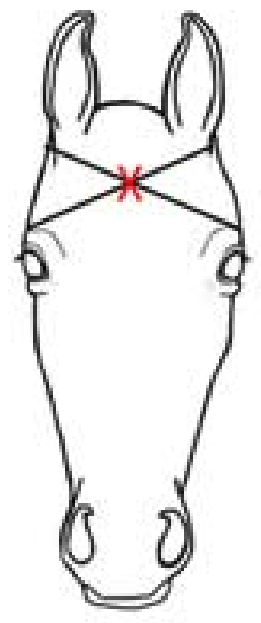
Fractured Legs
Unfortunately, fractured or broken legs do occur. This can happen as a result of stepping in a hole, catching a leg between two logs, getting kicked by another horse, falling any distance, or simply stumbling and coming down hard on a leg. These types of injuries can be catastrophic. A fracture usually can only be visible via x-ray. If a trailer can reach the horse, bandage and splint the injured limb and transport it to a veterinarian. However, getting a trailer to a horse is not always possible. If a leg is obviously broken and the horse is unable to walk or bear weight, often the only humane and kind treatment available is to euthanize the horse. Ideally, a veterinarian should be called on to perform this, but again that may not always be possible. When required and necessary a gunshot to the head may be the most viable option. The firearms that are used must be well maintained and care must be taken to ensure the safety of the operator, observers, and other animals. All laws and regulations governing the possession and discharge of firearms must be adhered to. The site for entry of the bullet is described as being on the intersection of two diagonal lines each running from the outer corner of the eye to the base of the opposite ear.1 (Figure 1) The firearm should be aimed directly down the neck, perpendicular to the front of the skull, and held at least 2-6 inches away from the point of impact. When performed skillfully, gunshot results in instantaneous unconsciousness, and does not require contact with the horse.2
Colic
Colic is a general term for abdominal pain and it can occur at any time. There are numerous reasons a horse may experience colic, some of which can be serious and life threatening. If signs of colic are exhibited, get the horse to a veterinarian as soon as possible. Signs may include but are not limited to sweating, agitation, wanting to roll, kicking at their belly, lying down, or abdominal distention. Do not wait and see if it gets better on its own. Some actions can be key in preventing colic. Do not allow your horse to become dehydrated. Make sure they are fully watered before you start and give them access to water frequently throughout the day. If a horse has become hot and dehydrated, do not allow them to engorge on several gallons of cold water at one time. Give them a few gallons, walk them for a few minutes to cool them down, then offer them a few more gallons of water and continue walking. Taking 30 minutes to cool a horse down and get them back on full water can prevent colic. Rapidly consuming large amounts of cold water can cause abdominal pain in itself. If signs of abdominal pain occurs, do not allow the horse to roll around on the ground. This can lead to further abdominal problems. Sometimes, walking a horse will encourage gastric motility and help the horse get through a mild episode of spasmodic colic. Many times the only treatment is medical so do not wait to seek veterinary assistance.
Muscle Cramping (Tying Up)
Horse have large muscle groups and can often experience sever cramping leading to pain and fatigue. This is referred to as Exertional Rhabdomyolysis. Horses experience normal muscle soreness caused by work, however, exertional rhabdomyolysis differs from normal muscle soreness in severity and duration. Signs include muscle cramping, stiff gait, reluctance or refusal to move, excessive sweating, and painful back and gluteal muscles. The most common cause of exertional rhabdomyolysis is exercise that exceeds the horse level of training leading to muscle cramping.3 Signs generally appear after the onset of exercise. Exertional rhabdomyolysis can be extremely serious. As muscle cells break down they release myoglobin into the blood stream. Myoglobin at high levels is toxic to the kidneys. Urine may become dark and even coffee colored in nature. At the onset of signs, exercise should be stopped, and the horse should be allowed to cool down with access to fresh water. After the horse has cooled down, proceed to a veterinarian for further evaluation. Exertional rhabdomyolysis may be avoided by conditioning the horse properly before the trail ride. Start with short workouts that progress to more strenuous exercise over a period of time.
Eye Injury
Horses will often experience eye injuries on trail rides. Branches, twigs, horse tails, and rocks can all cause injury. Injuries can range from simple scratches to the cornea to a rupture of the globe itself. Signs can include excessive tearing, closed eye, and reluctance to open an eye due to pain. The eye should be examined closely to ensure that a foreign body is not still present causing further damage. Make sure to roll the eyelid up and check underneath as foreign bodies can become trapped under the eyelid. A scratch to the cornea may not be visible at first but may become white as edema and other cellular components gather at the site of the injury. If dirt or debris are present in the eye, gently lavage the eye with eye wash or water to clean it out. All eye injuries should be examined by a veterinarian. Even the simplest of scratches can cause lasting problems if not cared for properly.
Basic Equine First Aid Kit
- Shoeing Tools (rasp, hammer, nails, shoe)
- Bandaging material (absorbent wound pad, bandaging material such as vet wrap, white athletic tape)
- Wound antiseptic (triple antibiotic ointment)
- Eye lavage (use water if eye lavage solution is not available)
- Address and contact information for the nearest equine veterinarian
Summary
Trail rides can be a very rewarding and growing experience for you and your horse. However, injuries do happen on trail rides, and often they are serious. It is important to know what to do and how to address these incidents when and if they arise. If traveling outside of your local area, identify the closest veterinarian to your ride before leaving. Cell phone service is not always available and knowing where to go in case of an emergency before you have an emergency can save valuable time. By understanding a few basic equine first aid principles and skills, the outcome of these injuries can be much improved.
References
- 1American Veterinary Medical Association (AVMA). 2013. AVMA Guidelines for the Euthanasia of Animals: 2013 Edition. https://www.avma.org/KB/Policies/Documents/euthanasia.pdf
- 2Hoopes, Karl and Mason, Holly, "Time to Say Goodbye (Equine Euthanasia)" (2016). All Current Publications. Paper 840. Retrieved from http://digitalcommons.usu.edu/extension_curall/840
- 3Merck Veterinary Manual: Exertional Myopathies in Horses. Retrieved from http://www.merckvetmanual.com/musculoskeletal-system/myopathies-in-horses/exertional-myopathies-in-horses - false
Published March 2017
Utah State University Extension
Peer-reviewed fact sheet
Authors
Karl Hoopes, DVM, Utah State University Equine Extension Specialist
Related Research



